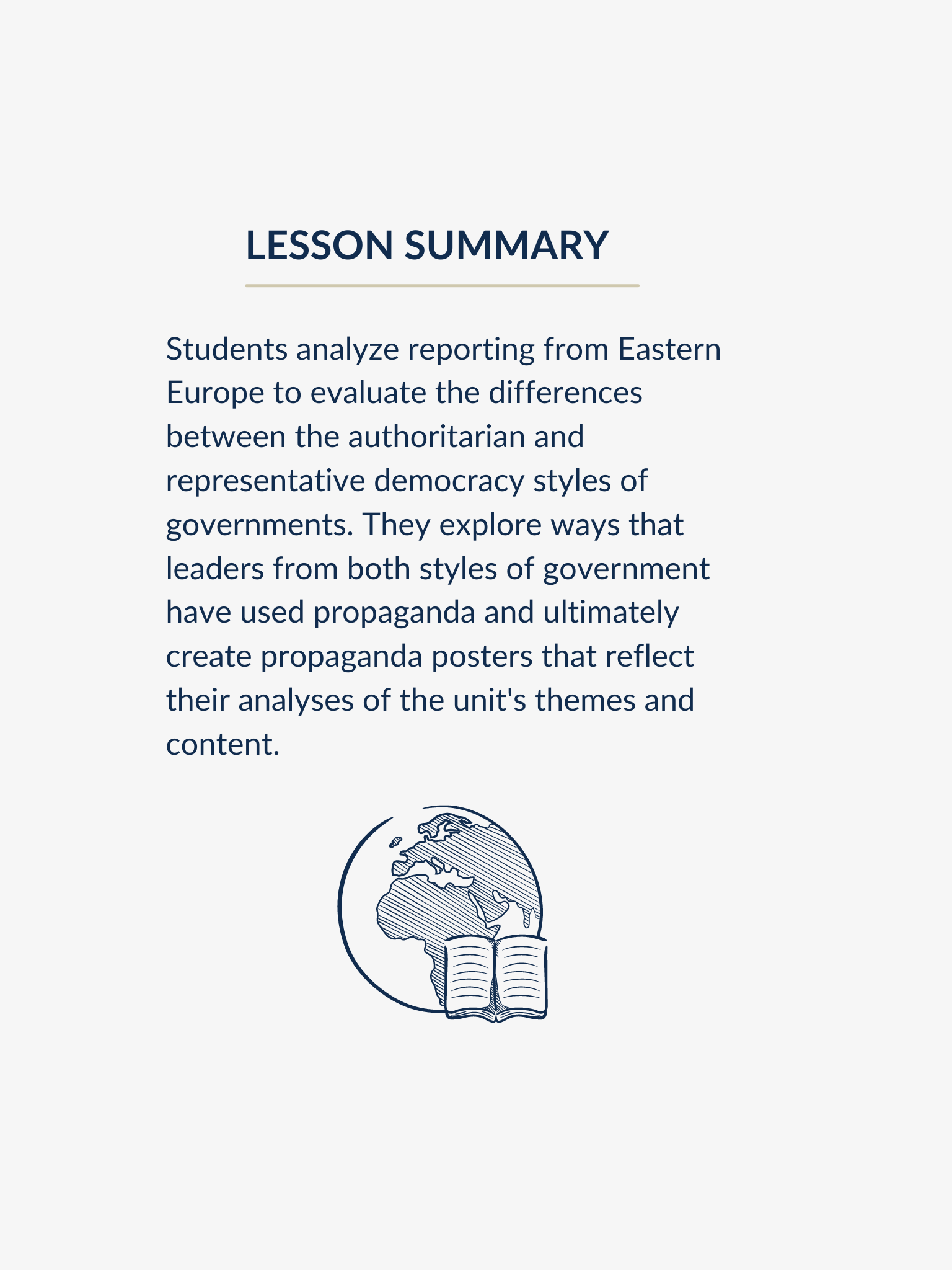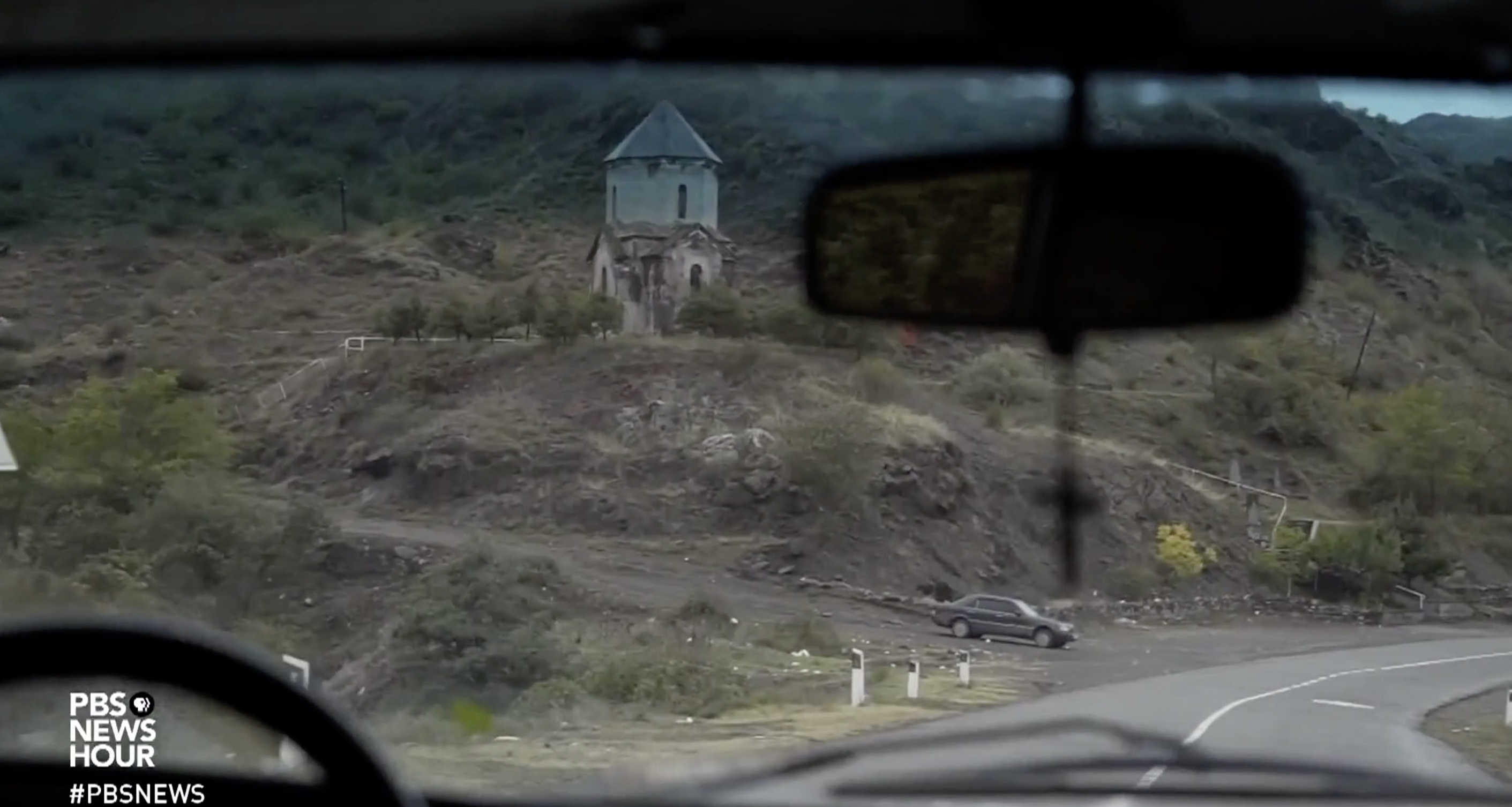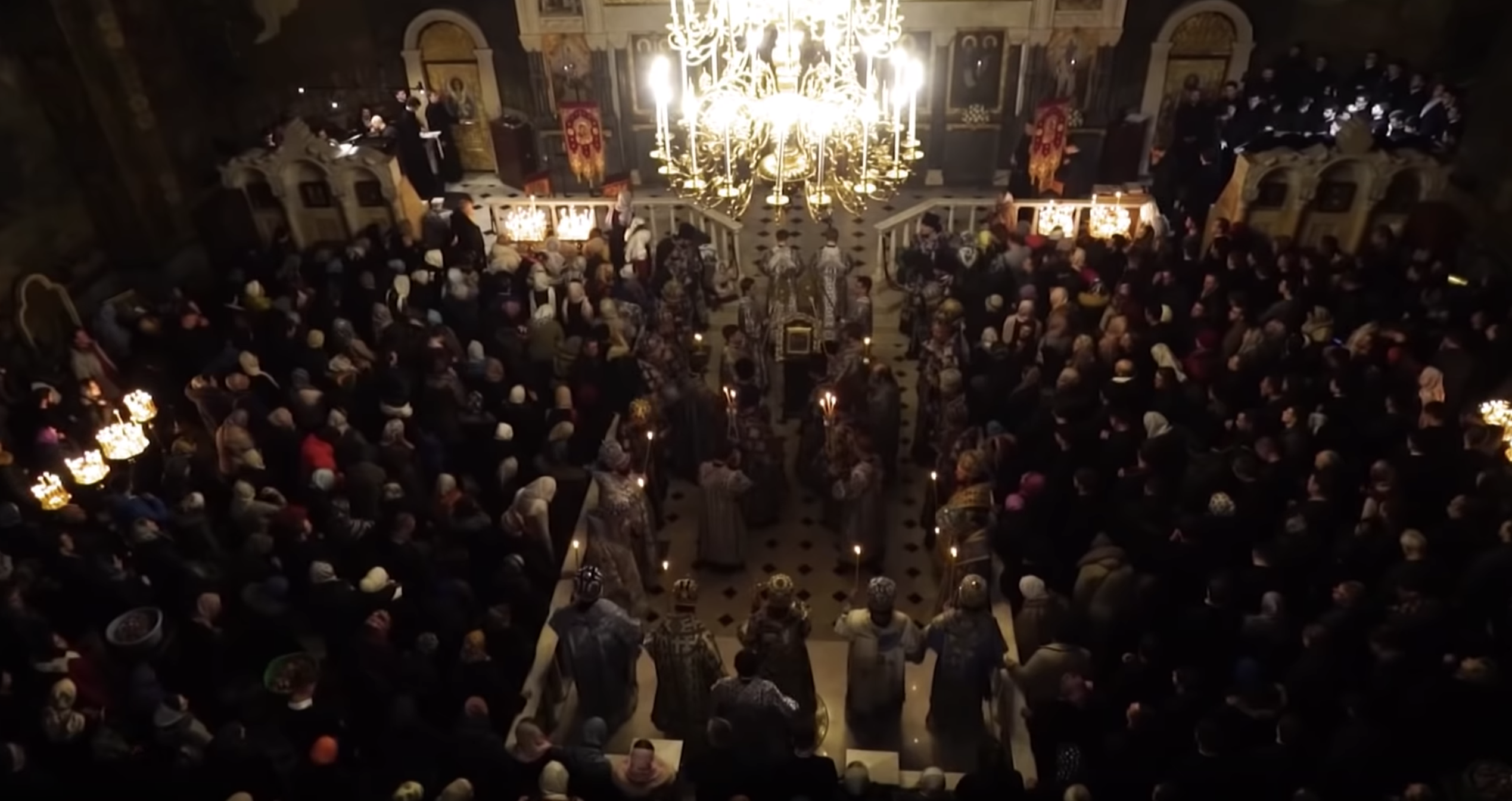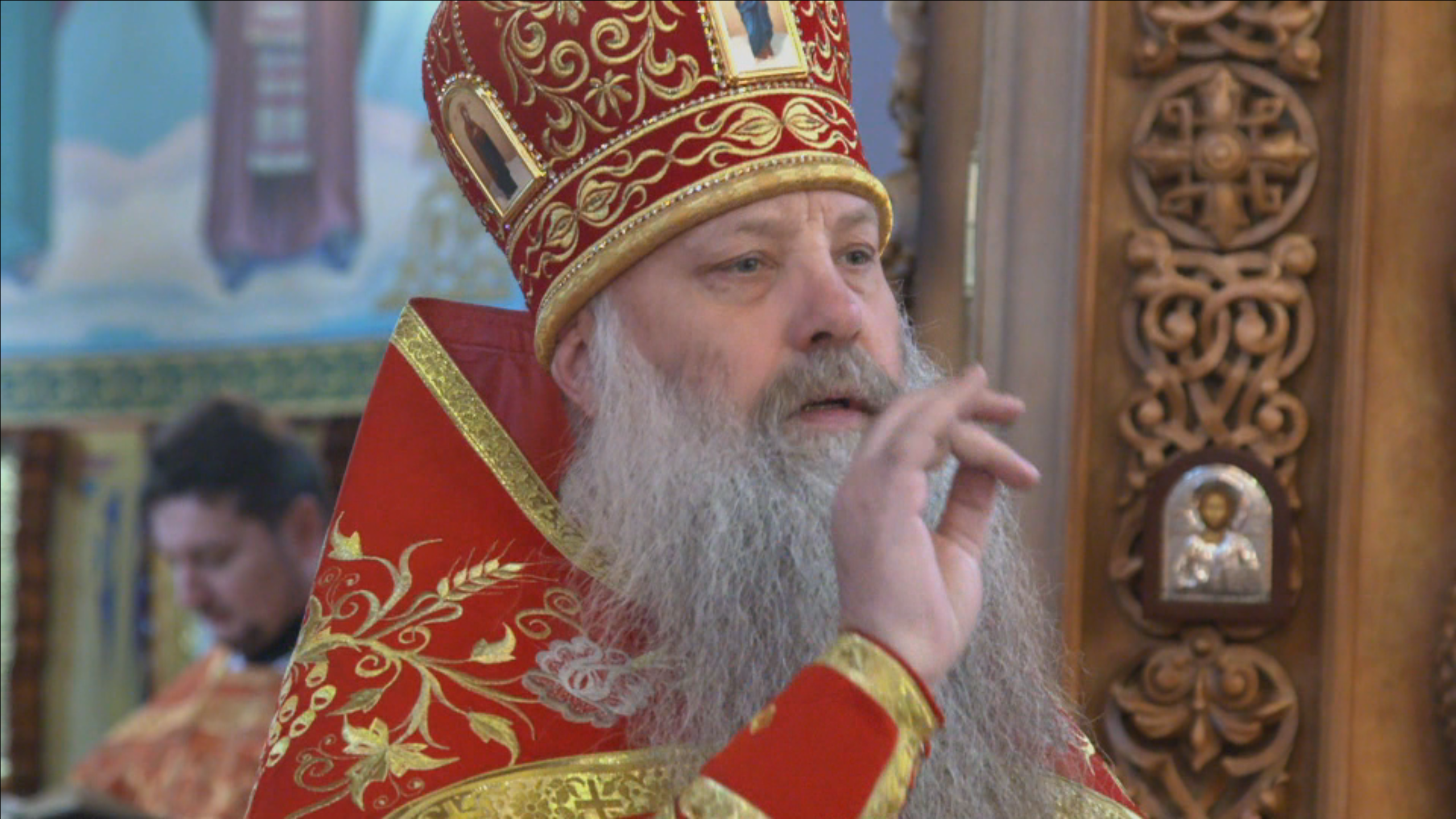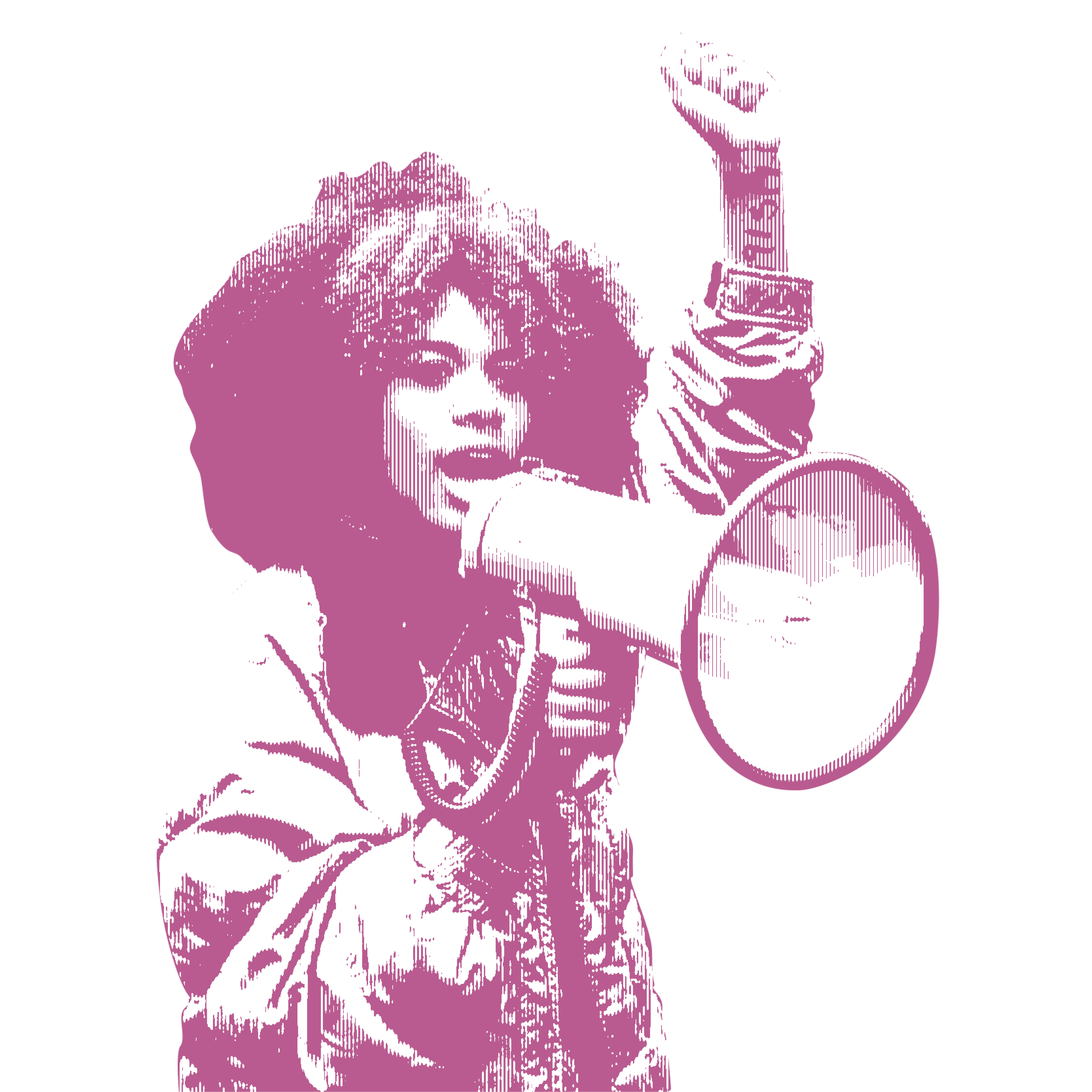This unit was created by Barbara Lindauer, a high school World History teacher in Collinsville, IL, as part of the 2021-2022 Pulitzer Center Teacher Fellowship program. It is designed for facilitation across approximately five 75–90 minute class periods.
For more units created by Pulitzer Center Teacher Fellows in this cohort, click here.
Objectives:
Students will be able to...
- Identify and describe elements of authoritarian and democratic governments.
- Analyze how policies and practices by authoritarian and a democratic governments impact the lives of individuals.
- Compare and contrast different government leadership styles.
- Make distinctions between an underreported and overreported news story.
- Reflect on human rights, the connection between government structures and human rights, and what rights they may be taking for granted or feel are being challenged.
- Analyze and consider what an individual can do to guarantee their universal rights are met.
- Utilize visual and textual techniques to convey messages by creating propaganda posters.
Unit Overview
In this unit, students will analyze the differences between the authoritarian and representative democracy style of governments. They will explore reporting from Eastern European countries that were once part of the Eastern Bloc countries, and conduct their own research to compare and contrast actions by world leaders from those countries. They will also research and evaluate leadership traits of known leaders and label them as either authoritarian or democratic.
After examining the work of investigative journalist Simon Ostrovsky about the growing numbers of authoritarian leaders and policies in Eastern Europe, students will evaluate to what degree these policies and leaders are gaining power in the United States. They will also examine the impact of authoritarian leadership on the rights of citizens.
The unit will conclude with students analyzing the role of propaganda in furthering the policies and leadership of democratic and authoritarian leaders, and ultimately creating a propaganda poster that reflects their understanding of the unit content and themes.
Performance Task
- After viewing a variety of propaganda posters, students will discuss the components that the posters have in common as part of a “think- pair-share.”
- Students will identify a modern-day (social, political, personal, etc.) issue/theme/slogan that relates to the Russian and Eurasian Republic Unit, or other content/themes from this unit, to use as inspiration for their posters.
- Students will create a propaganda poster for their community that reflects their understanding regarding this region of the world and their feelings about how the rise of authoritarian leadership impacts the world.
- Posters will be shared with the class and students will provide reflective responses to at least three other classmates' creations.
Five-lesson plan for teachers, including pacing, texts and multimedia resources, guiding questions for group discussions, and performance task instructions and grading rubric for the unit. Download below, or scroll down to read the complete unit plan.
Unit Resources:
| Texts | Journalist bio: Simon Ostrovsky | Pulitzer Center |
| Videos | >Pride, patriotism and how Putin helped redefine what it means to be a 'true Russian’ by Nick Schifrin and Zach Fannin for PBS NewsHour >Why Fighting Between Armenia, Azerbaijan Has Regional Implications by Simon Ostrovsky for PBS NewsHour >Dissidents Are Fleeing Belarus After Lukashenko’s Crackdown On Protesters by Simon Ostrovsky for PBS NewsHour >‘Anti-LGBT Ideology Zones’ Are Being Enacted In Polish Towns by Simon Ostrovsky for PBS NewsHour >"Inside Russia” by Nick Schifrin and Zach Fannin for PBS Newshour >What Are Underreported Stories? video from the Pulitzer Center >Authoritarianism and Misinformation in Eastern Europe on-demand webinar from the Pulitzer Center >What is Propaganda? An Introduction to Propaganda Techniques from HelpTeaching |
Students concluded the unit by creating propaganda posters that reflected themes and content from the unit. Students were advised to clearly communicate their perspective, audience, and message as part of the image. Their work was evaluated using the propaganda poster rubric, which is linked in the unit plan.
ILLINOIS SOCIAL SCIENCE STANDARDS
SS.CV.1.9-12. Distinguish the rights, roles, powers, and responsibilities of individuals and institutions in the political system.
SS.CV.2.9-12. Evaluate the opportunities and limitations of participation in elections, voting, and the electoral process.
SS.CV.3.9-12. Analyze the impact of constitutions, laws, and agreements on the maintenance of order, justice, equality, and liberty.
SS.CV.5.9-12. Analyze the impact of personal interest and diverse perspectives on the application of civic dispositions, democratic principles, constitutional rights, and human rights.
SS.CV.6.9-12: Describe how political parties, the media, and public interest groups both influence and reflect social and political interests.
SS.G.10.9-12. Explain how and why culture shapes worldview.
SS.Soc.6.9-12 Analyze the impact of stratification and inequality on groups and the individuals within them.
